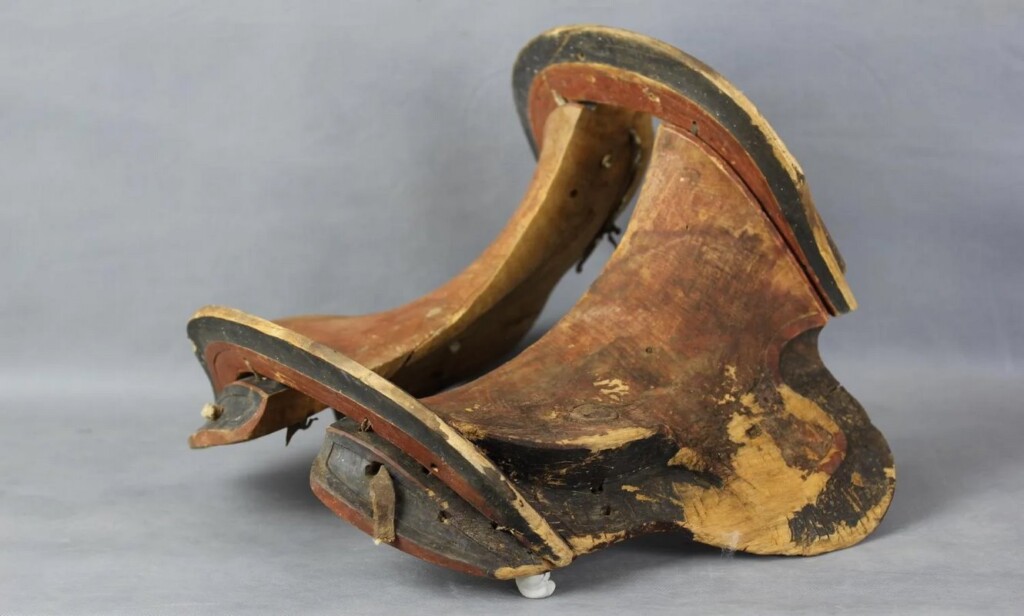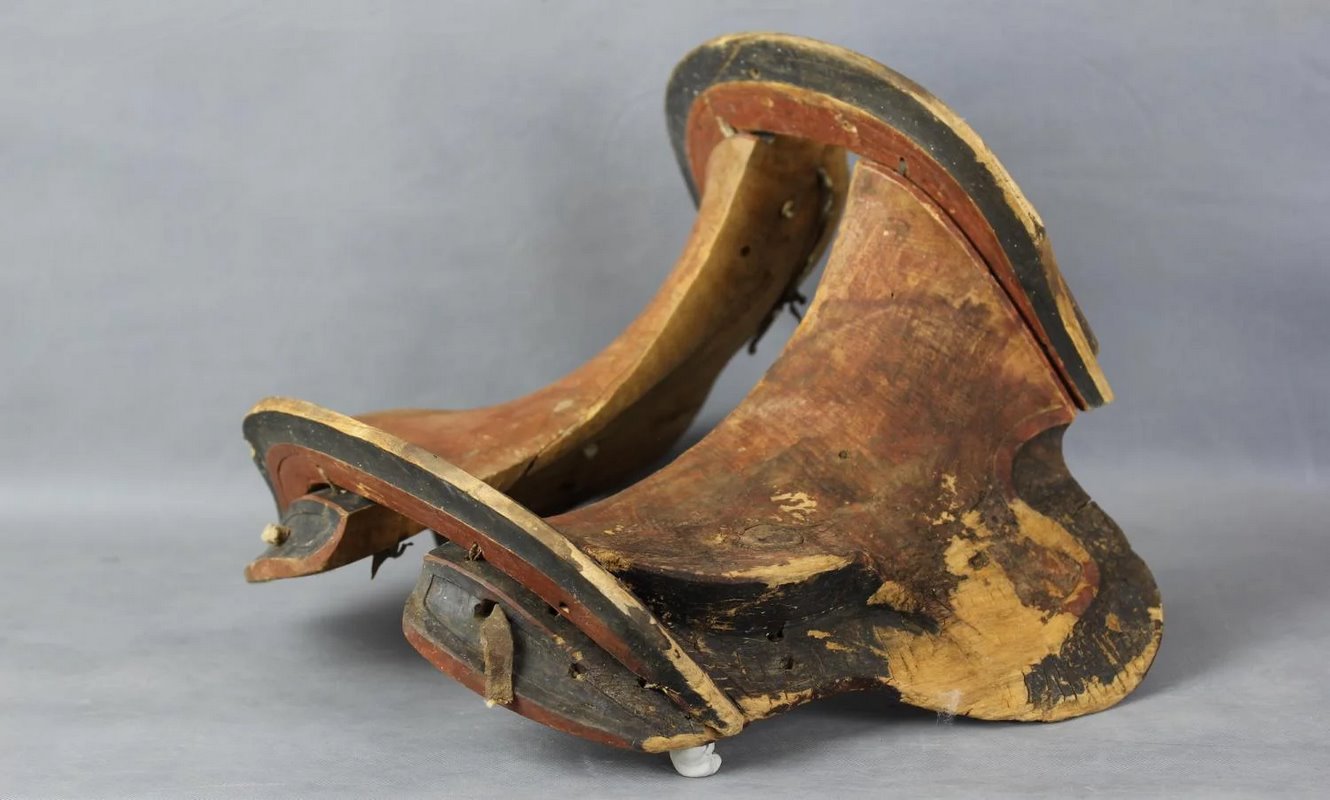
Not only were priceless artifacts of Mongolia’s past recently saved from looters, but among the objects found was a rigid and sophisticated riding saddle made of elegantly carved birch.
Dating to the 4th century BC, it places Mongolia, a nation whose sons and daughters conquered much of Eurasia on horseback, at the center of ancient riding innovations, as a rigid saddle allowed the rider to do much more, including fighting at high speeds and for sustained periods.
Equestrians have been putting pads on horses to protect their backsides since the earliest periods of horse domestication, but the leaps from pad to seat, and from seat to saddle, were neither obvious nor immediate for these ancient riders.
In April 2015, looters sacked an ancient cave burial in the holy Altai Mountains at a known site called Urd Ulaan Uneet, but whatever else they took, they didn’t take the saddle. When it was confiscated by police, the authors went back to the site and discovered the mummified remains of a horse, suggesting that horse and rider were revered together.
Birch grows plentiful in the Altai, and so it’s assumed to have been made by locals and not traded for, and the accompanied technological props have been awarded to the 4th century Mongolians, the date which a radiocarbon analysis of the saddle and the horse bones provided.
ANCIENT FINDS FROM THE STEPPE: Historians Stunned: Uzbekistan Nomads Supplied a Third of the Bronze Used Across Ancient Mediterranean
“Ultimately, technology emerging from Mongolia has, through a domino effect, ended up shaping the horse culture that we have in America today, especially our traditions of saddlery and stirrups,” said William Taylor, an archaeologist at the Univ. of Colorado, Boulder who co-authored the paper describing the saddle.
The authors write in their paper that long periods on horseback took their toll on both horse and rider. The evidence from burials of the emerging horse cultures of the Eurasian steppes shows that riders often developed skeletal deformities of the lower limbs, hips, and lower back thought to be caused by horseback riding.
Rigid composite frame saddles were made of wood, and elevated some of the rider’s weight off the horse’s spine, while simultaneously reducing the kinetic impacts on the human skeleton from riding.
In the cave, the seat of the saddle is carved from two pieces of wood joined together at the top with nails, while the pommel and the cantle, the curved pieces that make up the front and back of the saddle, were single pieces.
No physical remains of the stirrups were recovered from Urd Ulaan Uneet, but leather strapping attached halfway up the saddle seat suggests there would have been. Iron stirrups dating to slightly after this period have been found in other parts of Mongolia.
GREAT ARCHAEOLOGY NEWS: 76,000 Gold and Silver Artifacts Recovered from Chinese River Charts Infamous 17th Century Warlord’s Conquests
“It’s not the only piece of information suggesting that Mongolia might have been either among the very first adopters of these new technologies—or could, in fact, be the place where they were first innovated,” Taylor told his university press.
Horses can travel fast along Eurasia’s steppeland, from Mongolia and China in the east, all the way to Hungary and Ukraine in the west. Technology carried with them would have also moved fast, and it’s likely, the authors write, that the frame saddle and stirrups in combination were invented in Mongolia and transported rapidly westward.
Unfortunately for the people along their route, it was often transported at the tip of a spear, the edge of a sword, or the head of an arrow. The steppe tribes across Eurasia, which include such peoples as the Scythians, Xiongnu, the Huns, Bulgars, Cumen, Magyars, Khitan, and the Mongols, have always been warlike, and along with being able to ride while encumbered, the stirrup’s main advantage is to free the use of a skilled rider’s hands to strike in hand-to-hand combat, or fire a bow with much greater stability.
SHARE This Terrific Find And Page In The History Of Horses…




















